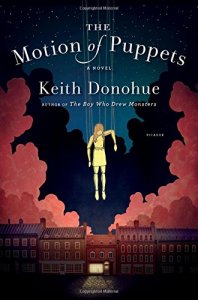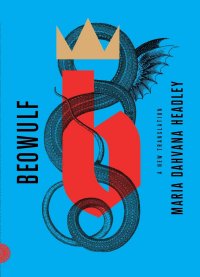Faren Miller reviews Keith Donohue
The Motion of Puppets, Keith Donohue (Picador 978-1-250-05718-1, $26.00, 332pp, hc) October 2016.
 Keith Donahue’s The Motion of Puppets opens with a bold statement from the heroine’s perspective: ‘‘She fell in love with a puppet.’’ Kay Harper loves the ancient thing – body ‘‘hewn from a single piece of poplar,’’ simple limbs designed for lost connections, ‘‘pierced at the hands and feet’’ – not just for its beauty and rarity but ‘‘because he could not be hers.’’ Note those dueling pronouns: what would be it to most observers is he for both the woman and (less ardently) for the author of this novel where some objects are very much alive. Keith Donohue’s modern take on old myths and fairy tales brings sentient puppets closer than Kay could ever imagine, when she becomes one herself.
Keith Donahue’s The Motion of Puppets opens with a bold statement from the heroine’s perspective: ‘‘She fell in love with a puppet.’’ Kay Harper loves the ancient thing – body ‘‘hewn from a single piece of poplar,’’ simple limbs designed for lost connections, ‘‘pierced at the hands and feet’’ – not just for its beauty and rarity but ‘‘because he could not be hers.’’ Note those dueling pronouns: what would be it to most observers is he for both the woman and (less ardently) for the author of this novel where some objects are very much alive. Keith Donohue’s modern take on old myths and fairy tales brings sentient puppets closer than Kay could ever imagine, when she becomes one herself.
Though the metamorphosis was unintended, and doesn’t lead to Ovidian antics, it’s still a kind of betrayal, since she leaves a bewildered human husband, Theo. Their viewpoints alternate throughout the braided plotlines. The marriage is still new enough that there should be a lingering sense of honeymoon for these American visitors to Québec City, Canada, where twentysomething acrobat Kay has come to take a small part in a local cirque’s performances while her husband (an academic in his thirties) works on a book translation. If the supernatural had not moved her beyond easy recovery – first in an Old Town toy shop that never seems to be open, then on the road and elsewhere – love might persist. Without melodrama, Donohue hints at a continuing commitment on both sides while they’re apart.
Her disappearance prompts an investigation by a pair of Canadian detectives, with Theo as the object of suspicion and sympathy, but there’s no hope of finding Kay just through stubborn searching. So he returns to his teaching job, uncertain of her fate and further troubled by the work he’s been translating: a biography of the early photographer Eadweard Muybridge. Unusual in many ways beyond the name, this was a genuine historic figure whose studies of movement in animals and humans give The Motion of Puppets its title and (as Donohue extends them to fantasy) some compelling images. But the episode in Muybridge’s life that torments Theo most deeply involves passion, betrayal and revenge: when his wife ran off with her lover, the photographer went after them… and killed the guy.
Puppets here range from humans transformed as Kay was, to iconic figures from myth and folktale, yet all have a human essence that persists even while the world seems to change. (Their reactions to a sudden drastic shift in size vividly show what it’s like to be one of them.) When two friends, a French-Canadian dwarf who worked for the cirque and a professor of myth and ancient cultures at Theo’s university, go with him on a belated quest to track her down, it’s a fascinating process that leads to a compelling conclusion. Touched by the ancient tragedy cited in lines from a poem that precedes the narrative, ‘‘Euridyce’’ by H.D., the book ends with words that might (unlike Pandora’s Box) offer us hope.







